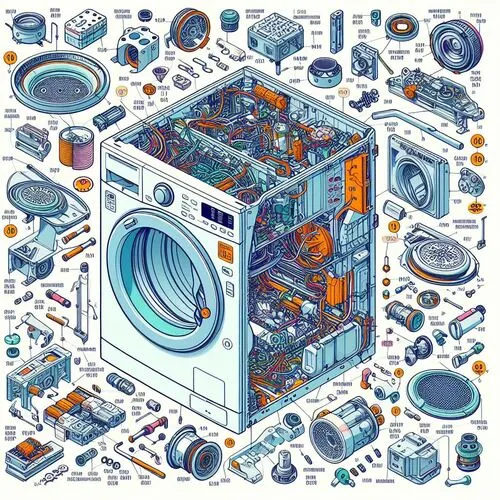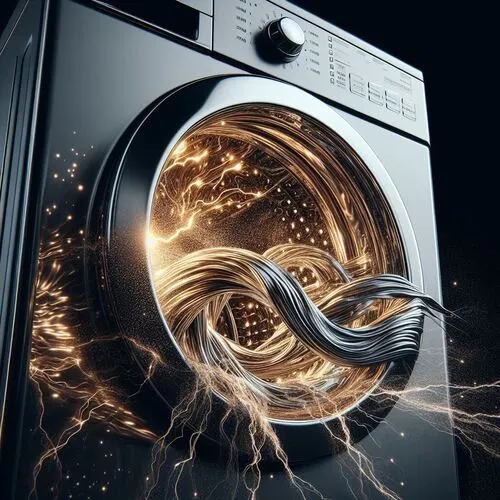Conquer the Laundry Pile: A Guide to Whirlpool Dryer Parts
Introduction
In the realm of household appliances, dryers play a crucial role in ensuring our clothes remain fresh, clean, and dry, particularly in humid climates where air-drying might be less effective. Whirlpool, a renowned brand in the appliance industry, offers a diverse range of dryer models, each equipped with a specific set of parts that contribute to their efficient operation. This blog post aims to provide a comprehensive overview of common Whirlpool dryer parts and their functions, offering readers valuable insights into maintaining and troubleshooting their appliances.
what are the Essential Whirlpool Dryer Parts?
Drum and Belt
One of the fundamental components of a Whirlpool dryer is its drum and belt system. The drum facilitates the tumbling of clothes, ensuring even drying, while the belt is responsible for the rotation of the drum. A smoothly operating drum and belt are essential for optimal performance.
Heating Element
The heating element is a critical part that generates the heat necessary to dry clothes effectively. Whirlpool dryers utilize different types of heating elements, including gas and electric variants, catering to various user preferences and household setups.
Moisture Sensor
Whirlpool dryers are often equipped with moisture sensors that detect the level of moisture in the dryer. These sensors play a vital role in adjusting the drying time accordingly, promoting energy efficiency and preventing over-drying of clothes.
Exhaust Vent System
The exhaust vent system is integral to the dryer’s functionality as it expels moisture and heat from the appliance. Regular maintenance and cleaning of the exhaust vent are crucial to ensure unobstructed airflow and prevent potential issues.

Glossary of Terms
- Drum: The cylindrical container inside the dryer where clothes are placed for drying.
- Belt: A loop of flexible material that connects the motor to the drum, enabling its rotation.
- Heating Element: A component that produces heat to dry clothes, commonly available in gas or electric variants.
- Moisture Sensor: A device that detects the level of moisture in the dryer and adjusts drying time accordingly.
- Exhaust Vent System: The pathway through which moisture and heat are expelled from the dryer to the external environment.
Whirlpool Dryer Models and Part Numbers
Here is a reference table listing common Whirlpool dryer models and their corresponding part numbers:
| Model | Part Number |
|---|---|
| WED7500GW | 4392067 |
| WED6620HC | 279816 |
| WGD5620HW | 4392067RC |
| WED4850HW | 341241 |
Refer to your dryer’s manual or contact Whirlpool customer service for model-specific details and part information.
How to Troubleshoot Common Dryer Issues?
Whirlpool dryer troubleshooting, Identifying and addressing common dryer problems is key to ensuring the longevity and efficiency of your Whirlpool appliance. Here are some typical issues and their associated parts:
| Common Issue | Whirlpool Dryer Part |
|---|---|
| Excessive Lint | Lint Filter |
| Long Drying Times | Heating Element, Moisture Sensor |
| Strange Noises | Drum, Belt |
Follow the user manual or seek assistance from Whirlpool customer service to troubleshoot and replace or repair faulty parts effectively.

Maintaining Your Whirlpool Dryer
Regular maintenance is crucial for preventing potential problems and extending the lifespan of your Whirlpool dryer. Here are some tips:
- Clean the Lint Filter: Regularly clean the lint filter to maintain proper airflow and prevent lint buildup.
- Inspect the Exhaust Vent: Periodically check and clean the exhaust vent to ensure optimal ventilation and prevent blockages.
- Wipe Down the Interior: Keep the interior of the drum clean by wiping it down regularly to prevent the accumulation of debris.
It’s essential to use genuine Whirlpool replacement parts during maintenance to guarantee optimal performance and safety.
Conclusion
Understanding the intricacies of Whirlpool dryer parts empowers users to maintain and troubleshoot their appliances effectively. Whether it’s replacing a worn-out belt or cleaning the exhaust vent, a proactive approach to dryer care can significantly enhance its performance and lifespan. Readers are encouraged to refer to the dryer’s manual or contact Whirlpool customer service for specific part information and repair assistance. Share your own maintenance tips or experiences in the comments section and join the community dedicated to conquering the laundry pile with Whirlpool dryers.





